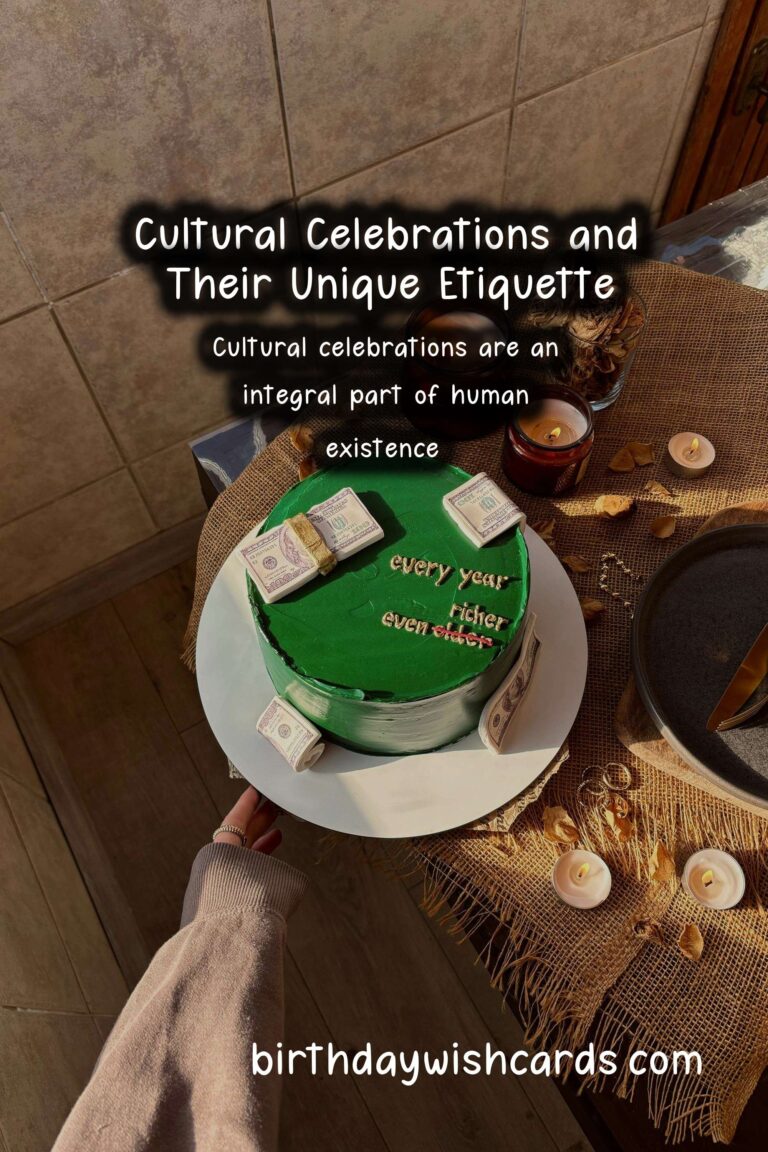
Cultural celebrations are an integral part of human existence, reflecting our values, traditions, and the joys of life. Each culture has its own way of marking significant events, with unique customs that often come with specific etiquette. In this article, we will explore timeless ways to celebrate various occasions and the associated etiquette around the world.
1. Understanding Celebration Etiquette
Celebration etiquette refers to the unwritten rules and norms that govern the way people behave during celebrations. These can vary significantly from culture to culture, and it’s essential to learn about them, especially if you are attending a celebration in a different country or among different cultural groups. Following proper etiquette respects the host and enhances the experience for everyone involved.
2. Birthdays: A Global Perspective
Birthdays are celebrated worldwide, yet the customs differ dramatically. In the United States, it’s common to have a party, eat cake, and open gifts. In contrast, in Mexico, the birthday person is often spun around before they blow out the candles, symbolizing a fresh start.
In many cultures, it’s also essential to acknowledge the birthday person genuinely. For example, in Japan, it’s customary to say ‘Tanjobi Omedeto’ and present a thoughtful gift.
3. Weddings: A Celebration of Love
Weddings are perhaps the most diverse celebrations of all. In India, weddings can last for several days and involve numerous rituals like the Mehndi and Sangeet. It is crucial to dress appropriately, usually in traditional garments, and to understand the significance of the customs performed during the ceremonies.
In Greece, a unique custom involves tossing a plate on the ground to symbolize good luck. It’s advisable to engage in such traditions with respect and understanding of their cultural importance.
4. Holidays: Observations and Practices
Many holidays carry specific celebration etiquette. During Thanksgiving in the USA, it’s polite to express gratitude and share what you are thankful for, while in China during the Lunar New Year, it’s customary to give red envelopes filled with money. This gesture symbolizes good wishes and luck for the year ahead.
Learning these customs helps bridge cultural gaps and fosters mutual respect.
5. Festivals: An Expression of Culture
Festivals often reflect a community’s identity and values. For instance, Diwali, the Festival of Lights in India, involves lighting lamps and fireworks to signify the victory of light over darkness. It’s essential to participate with reverence and an understanding of the festival’s significance.
In Spain, La Tomatina is a unique festival where participants throw tomatoes at one another. While it appears festive, it’s vital to respect the event’s local customs and enjoy responsibly.
6. Table Manners Around the World
Celebrations often involve shared meals, and table manners can vary widely. In Morocco, it’s customary to eat with your right hand and to share food from a communal dish. Being aware of these practices can significantly enhance your experience during cultural meals.
Similarly, in Japan, it’s considered rude to stick chopsticks upright in a bowl of rice, as this resembles funeral rituals. Adhering to local dining etiquette is a sign of respect and appreciation for the host.
7. Dress Code: What to Wear
Appropriate attire is vital in many cultures during celebrations. In certain Western countries, formal wear might be expected at weddings, while in many Asian cultures, it may vary from casual to traditional outfits depending on the event.
Understanding the dress code can prevent unintentional disrespect and help you blend in seamlessly at any celebration.
8. Gifting Etiquette
Gift-giving practices can differ significantly. In the Philippines, giving gifts is an essential part of celebrations, often involving beautifully wrapped items. However, in other cultures, such as in Japan, the presentation and wrapping of a gift is as important as the gift itself.
When attending any celebration, it’s considerate to research appropriate gifts and the manner of presenting them.
9. Greetings and Farewells
How you greet and bid farewell during celebrations can also vary. In many cultures, such as in France, cheek kissing is a customary greeting, while in Japan, a bow is more appropriate. Learning these gestures can enhance interpersonal connections during celebrations.
10. Conclusion: A Journey of Respect and Understanding
Celebrating with respect for different cultural practices and etiquette opens doors to deeper connections and enriched experiences. Whether it’s a wedding in India or a birthday in the USA, embracing the nuances of celebration etiquette around the world allows us to celebrate our shared humanity.
As we traverse through various cultural celebrations, remember that every gesture of respect and understanding contributes to a more united and joyful world.
Cultural celebrations are an integral part of human existence. Each culture has its own way of marking significant events. 
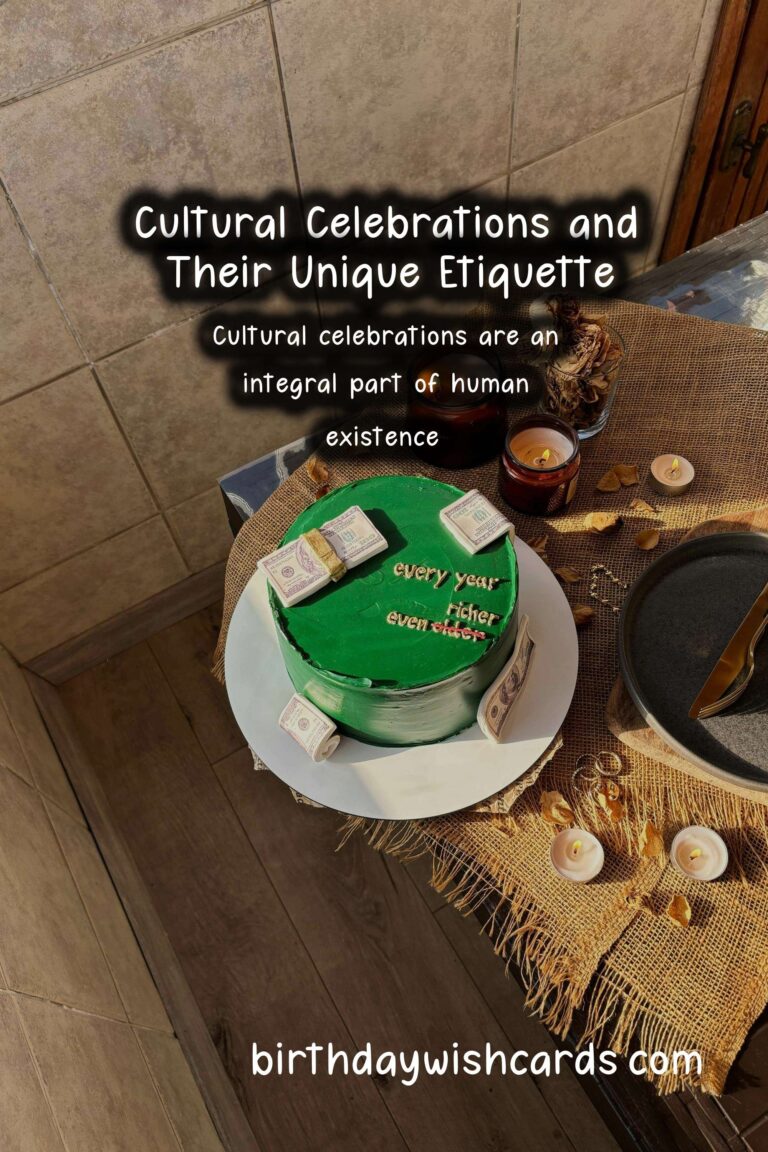


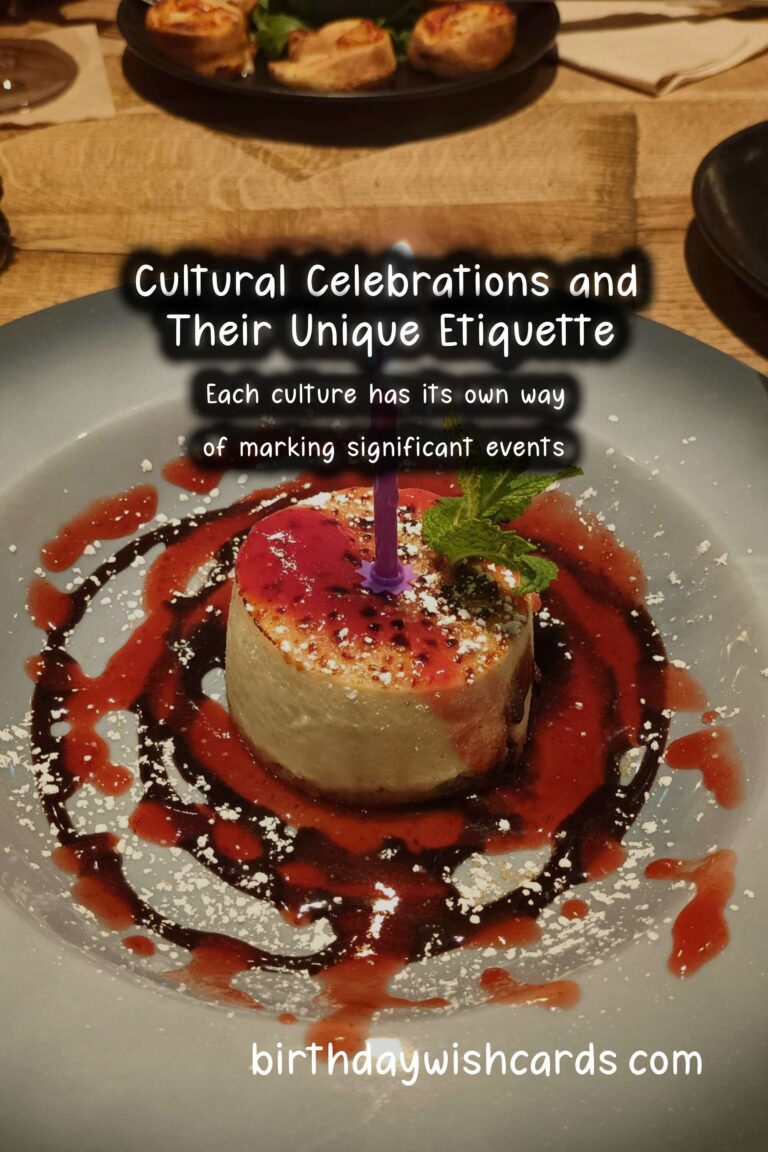
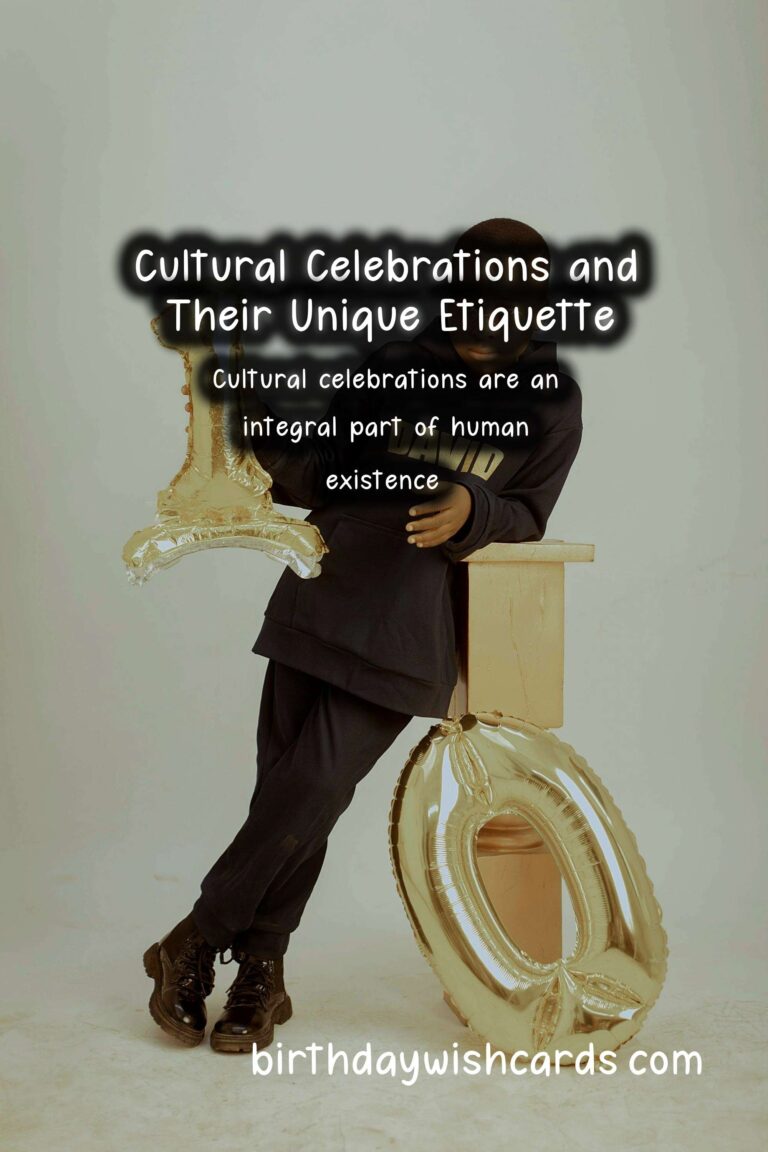

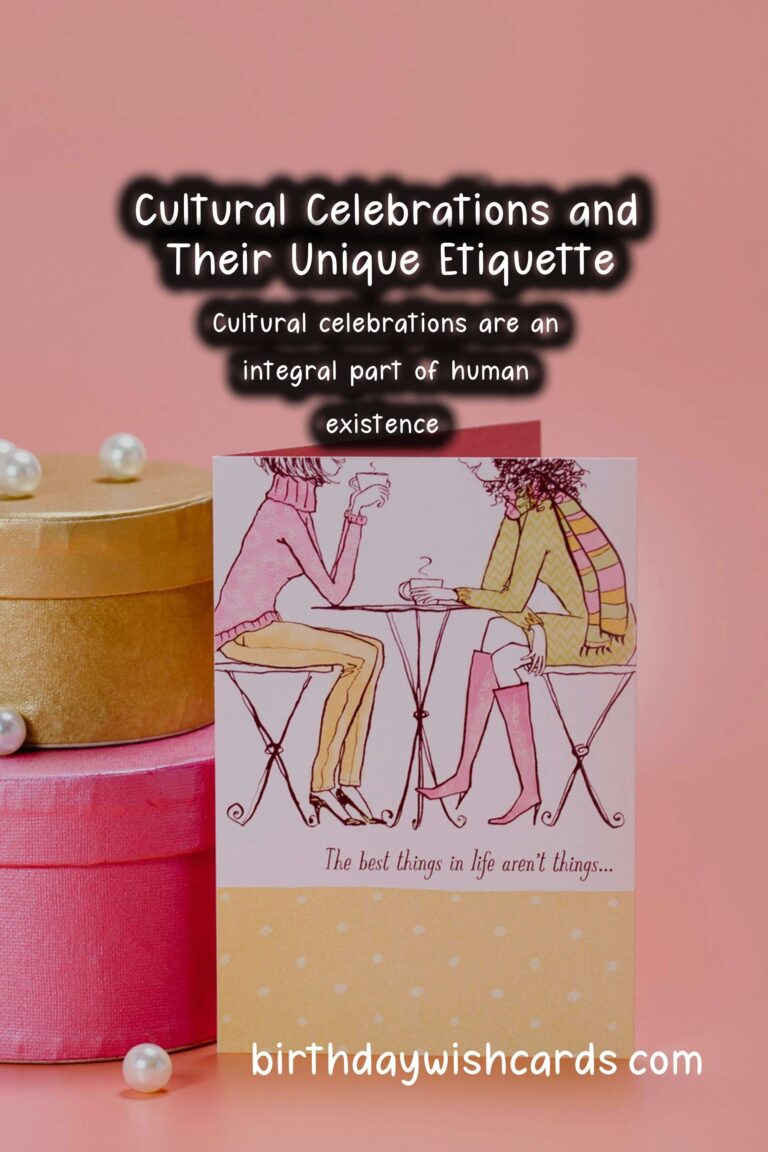
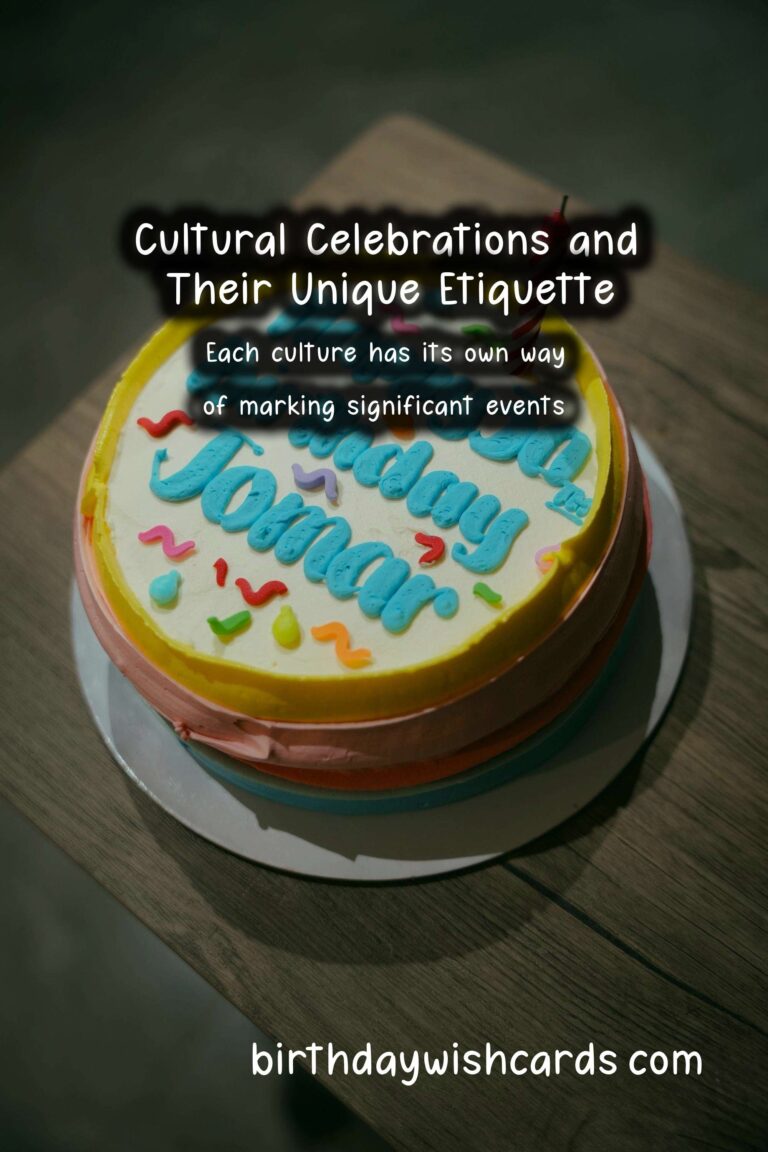
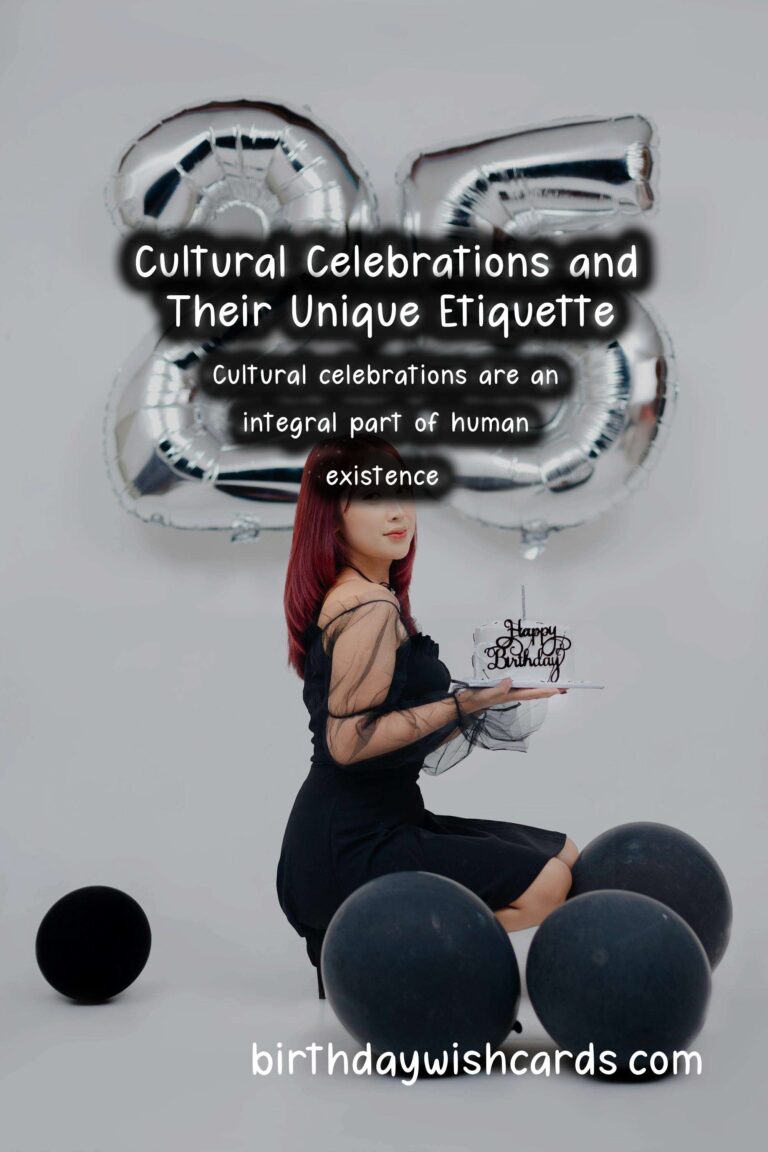
#CelebrationEtiquette #GlobalFestivals




